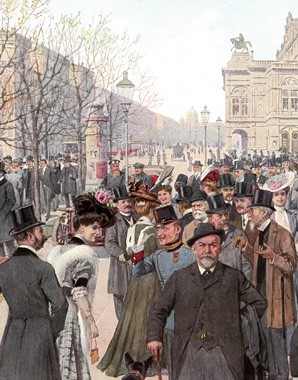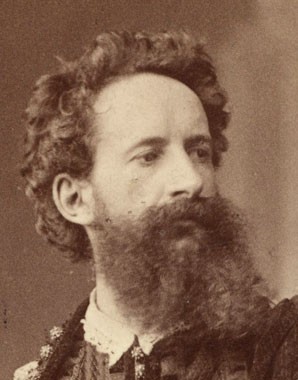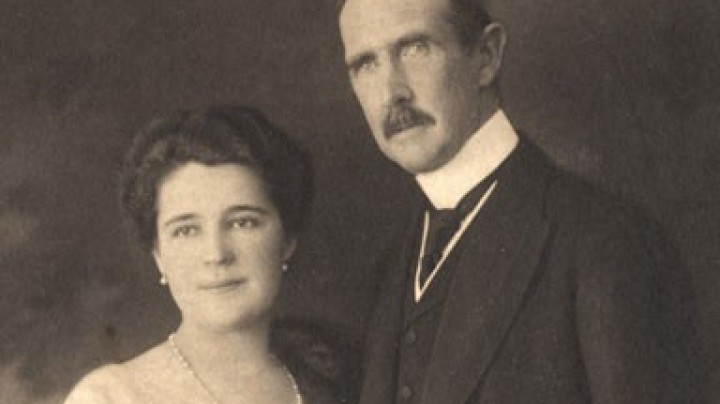The Ringstrasse as stage: a pageant for Emperor and people
The pageant designed by Hans Makart to mark the silver wedding anniversary of the imperial couple in 1879 was a monument to the Viennese bourgeoisie.
The Emperor expressed his good will towards the project.I therefore desire to give public proof of my good will, my recognition of your value in the life of the state and my patronage of your interests, to this creative work in all fields of industry, trade and transport as well as the fine arts.
Intended as a tribute to the imperial couple from the City of Vienna, the procession started from the Prater, continuing along the as yet unfinished Ring. Designed to display the cultural riches of the Habsburg Empire, it was not intended to represent the nobility and upper middle classes alone but to include the participation of the less-well off among the population. Divided into five sections, students, various associations, industrial co-operatives, artists, huntsmen and firemen processed past the spectators. A total of 14,000 people took part in the pageant.
Directed by Makart, who took part dressed as Rubens and mounted on a Lipizzan stallion, the main section was a lavish historical spectacle: citizens dressed in historical costume represented all the traditional trades and occupations on elaborately decorated floats. The Renaissance costumes were a deliberate reference to the flourishing of the mercantile class, trade, artisanship, art and science in that epoch and symbolized the burgeoning self-awareness of the ascendant contemporary bourgeoisie.
The imperial family marked the anniversary at the town palace of the Emperor’s younger brother, Archduke Karl Ludwig, on 22 April 1879 with a ‘Historical Family Celebration of the Imperial House’. Here it was the dynasty that was the focus of the occasion. Six tableaux vivants with the participants imitating famous paintings or events reproduced significant moments from the history of the dynasty. The celebration was open only to a select private circle, and many members of the family participated in the tableaux.
In 1908 the Ringstrasse was again the scene of a historical procession, held to mark the 60-year jubilee of Emperor Franz Joseph. In contrast to the procession of 1879, it centred less on the demonstration of the importance of the bourgeoisie and more on invoking the desperately needed unity of the multinational state. High points from the history of the Habsburg Empire were presented in tribute to the dynasty, with great attention being paid to the authenticity of the historical costumes worn. These scenes were followed by the guilds and representatives of all the Empire’s nationalities dressed in their traditional costumes and accompanied by bands. Consisting of more than 12,000 participants, the procession attracted countless spectators to the Ring. However, the Emperor himself showed little interest in the event. The procession was financed by private individuals and the City of Vienna.




































